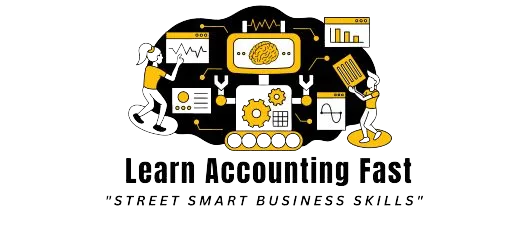Beyond KPIs – What Top CEOs Monitor Religiously
As a CEO you know the importance of KPIs (Key Performance Indicators) in tracking a company’s performance.
But top CEOs often look beyond the obvious metrics to get a deeper understanding of their business.
In this post, we’ll explore some of these hidden metrics, why they matter, and how you can use them to drive success in your business and personal life.
Let's dive in!
1. Customer Lifetime Value (CLV)
What is CLV? Customer Lifetime Value (CLV) measures the total revenue a business can expect from a single customer over the course of their relationship.
Why it Matters: CLV helps you understand the long-term value of your customers, guiding you on how much to invest in acquiring and retaining them.
How to Calculate CLV:
Average Purchase Value: Total revenue over a period divided by the number of purchases.
Average Purchase Frequency: Number of purchases over a period divided by the number of customers.
Customer Value: Average purchase value multiplied by the average purchase frequency.
Average Customer Lifespan: Average number of years a customer continues to buy from you.
CLV: Customer value multiplied by the average customer lifespan.

Action Plan:
Business: Use CLV to segment your customers. Focus marketing efforts on high-CLV segments for better returns. Identify why customers leave. Use surveys or feedback forms to gather insights and make necessary improvements.
Personal: Apply the CLV concept to your relationships. Invest time and effort in those that offer long-term mutual benefits. Reflect on personal habits or behaviours that might push people away. Work on improving these areas.
2.Churn Rate
What is Churn Rate? Churn rate is the percentage of customers who stop doing business with you over a specific period.
Why it Matters: A high churn rate can indicate customer dissatisfaction and can hurt your revenue. Reducing churn is often more cost-effective than acquiring new customers.
Number of Lost Customers: Customers who left during a period.
Total Customers at Start of Period: The number of customers at the beginning of the period.
Churn Rate: (Number of lost customers / Total customers at start of period) x 100
Action Plan:
Business: Identify why customers leave. Use surveys or feedback forms to gather insights and make necessary improvements.
Personal: Reflect on personal habits or behaviors that might push people away. Work on improving these areas.
3. Net Promoter Score (NPS)
What is NPS? Net Promoter Score (NPS) measures customer loyalty by asking customers how likely they are to recommend your company to others on a scale from 0 to 10.
Why it Matters: NPS is a strong indicator of customer satisfaction and loyalty, predicting future business growth.
How to Calculate NPS:
Survey Question: "On a scale of 0 to 10, how likely are you to recommend our company to a friend or colleague
Categories:
Promoters (9-10): (Promoters)
Passives (7-8): (Passive)
Detractors (0-6): ( Detractors Unhappy customers)
NPS Calculation: NPS is calculated by subtracting the percentage of Detractors from the percentage of Promoters. NPS = % Promoters − % Detractors

First, calculate the percentages: Percentage of Promoters: 50/100 ×100 = 50%
Percentage of Detractors: 20/100 × 100 = 20% Next, subtract the percentage of Detractors from the percentage of Promoters: NPS = 50% − 20% = 30 So, the NPS in this example is 30.
Interpreting NPS: Positive NPS: Indicates more Promoters than Detractors, suggesting good customer loyalty. Negative NPS: Indicates more Detractors than Promoters, suggesting customer dissatisfaction. Higher Scores: The closer the score is to 100, the better, indicating a higher level of customer satisfaction and loyalty.
Action Plan:
Business: Regularly survey your customers and act on the feedback from detractors to improve their experience.
Personal: Use a similar approach in your personal life. Ask for feedback from friends and family and work on areas where you receive criticism.
Linking Metrics to Everyday Operations
Integrate CLV in Marketing Strategies:
Focus your marketing budget on campaigns that attract high-value customers. Offer loyalty programs to increase their lifetime value.
Monitor Churn Rate in Customer Service:
Use churn rate data to improve your customer service. Implement retention strategies like personalised follow-ups or special discounts for returning customers.
Utilize NPS in Product Development:
Incorporate feedback from your NPS surveys into your product development process. This ensures that your products meet customer needs and expectations.
Summary
By focusing on these hidden metrics, you can gain deeper insights into your business's health and future trends.
Implementing CLV, churn rate, and NPS into your daily operations will help you make informed decisions, improve customer satisfaction, and drive long-term success.
Start using these metrics today to transform both your business and personal life!
Be the greatest you can be…
Join us, click the link below for short, sharp, simple video courses that give you confidence and street-smart business skills to succeed
Latest Posts
The Six Laws of
Wealth Creation
The Six Laws of Wealth Creation. These timeless actions work in 2025’s rapid-change environment and give you calm, repeatable steps to grow money.....
How to Read Business
Financial Reports
A Story of Business Secrets Hidden in Reports
Sarah sat in her office staring at a thick folder of financial reports. Sales, costs, cash flow....
The Millionaire
Mind in Action
Timeless Wealth, Flow, and Power from Robert Kiyosaki,Frank Kern, Tony Robbins
and Open Ai......
Why Cost Control Is the Forgotten Key to Profitability
Most entrepreneurs chase sales growth like it’s the only thing that matters.They spend thousands on ads, new products, and fa ncy offices.....
Master Prompts For
Financial Analysis
The Complete Small Business Guide to Financial Analysis: Formulas, Examples, and Tips.These are super-powerful questions you can ask an AI to help..
How To Solve Any Business
Problem With Ai
AI can help you solve all of these faster, smarter, and more affordably, if you know how. This guide will show you exactly how to do that.........
Disclaimer: The content shared on this blog and in these videos is for informational and educational purposes only. Despite my 30 years of experience as a business owner, I am not a certified financial advisor, accountant, or legal professional. The insights and tips shared are based on personal experiences and should not be taken as professional financial or legal advice. For financial, legal, or professional advice, please consult with a certified professional in the respective field. I disclaim any liability or responsibility for actions taken based on any information found in this blog or these videos.
Copyright Learn Accounting Fast - All Rights Reserved 2025









Facebook
Instagram
X
LinkedIn
Youtube